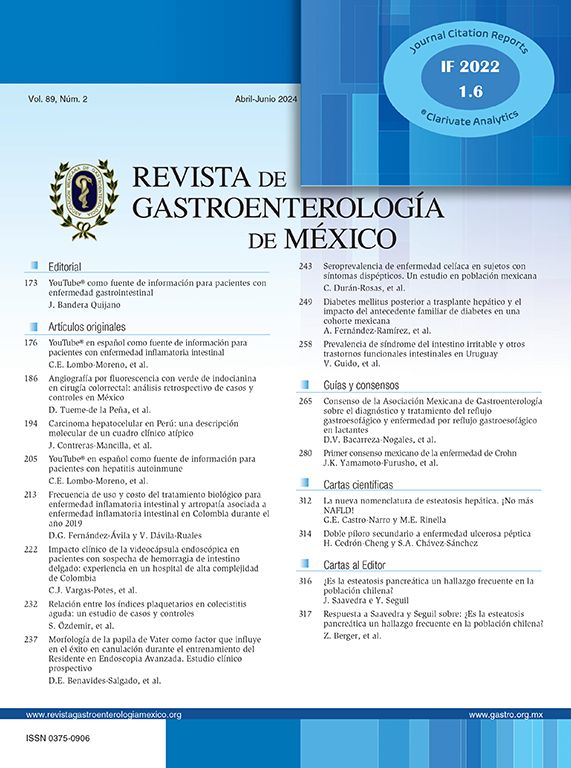The ingestion of a nutritionally adequate diet and absorption of its components is essential for maintaining vital functions and a normal body composition. In clinical practice, anorexia, dietary restriction (at times unnecessary), malabsorption, and the increased losses and requirements secondary to multiple diseases are all causes of malnutrition.1 Enteral nutrition is an excellent therapeutic option for feeding patients in these cases, especially when the digestive tract if functioning but patients aren’t able to ingest food. Enteral nutrition has recently been proposed as a way to ensure that patients comply with their nutritional requirements both in the hospital and as outpatients.2 In the majority of cases enteral nutrition is preferred because of its lower cost and fewer complications.
There are many clinical studies and different meta-analyses that compare the advantages and disadvantages of enteral and parenteral nutrition. However, there is a striking heterogeneity on the criteria for indicating one type of nutrition or the other, patient selection, and the endpoints of the study populations −usually defined by a specific disease−, and the variables to be evaluated, all of which results in conclusions that are often questionable and of doubtful clinical significance.3 Some other studies support the combination of both types of feeding.4
One of the most common complications of enteral nutrition −occurring in 10 to 80% of patients− is diarrhea. It may be due to the composition of the formula [high content of simple carbohydrates, or containing lactose (when patients are lactose-intolerant), or gluten (in celiac patients)], its osmolarity (related to solute concentration), or to the delivery velocity. The incidence of diarrhea can be quite variable, depending on the type of patient (very frequent in the intensive care unit),5,6 even though this incidence may rely on the operational definition of diarrhea. In the majority of cases, there are other factors other than enteral nutrition that could produce diarrhea, therefore posing difficulties on its study. Other important complications are constipation (much more common in long-term care patients that receive in-home medical assistance), aspiration, infections (due to formula contamination), hypo/hyperalimentation, hyponatremia, hypokalemia, hypophosphatemia, refeeding syndrome, hyperglycemia, and tube-feeding syndrome (azotemia, hypernatremia, and dehydration).7,8
The study that Catafesta9 presents is adequately designed and brings together the professional opinion of three gastroenterologists −with regular to good agreement− and proceeds to evaluate the effect of different drugs on the gastrointestinal manifestations associated to enteral nutrition. Firstly, it describes −as expected− a high incidence of gastrointestinal alterations; however, the higher prevalence of constipation compared to that of diarrhea is surprising. The study does not specify whether patients were studied in the hospital ward or in the Intensive Care Unit, but constipation was probably more related to the high frequency of neurologic patients.
Given that the complications due to the treatment took place simultaneously with the delivery of enteral nutrition, the possibility to rule out the effect of the drugs prescribed was somehow difficult. In this study, the route of delivery for the tube feeding was not mentioned (nasogastric/nasojejunal vs. gastrostomy/jejunostomy) therefore neglecting the symptoms that may have arisen from the pathological process which may, in turn, modify the gastrointestinal function.
In such a study of this kind, it is important to take into consideration the effects of age and diabetes on the digestive tract motility and to consider that in extreme cases (gastroparesis), jejunostomy feeding is chosen precisely because of their effect.10,11 It would also have been interesting if the authors had evaluated the frequency with which enteral nutrition had been interrupted and the reasons why.12
Notwithstanding, Catafesta's study is relevant to clinical practice for stressing the fact of not overlooking digestive tract alterations caused by enteral nutrition and/or the concomitant prescription of drugs that may limit the use of enteral nutrition, urging the analysis of its causes.9 This study could lead to two proposals: to define the criteria for evaluating gastrointestinal tolerance so that the nutritional support may not be unnecessarily interrupted,13 causing greater malnutrition; and to systematically consider drugs as an important cause of this intolerance in such a way that timely preventive and corrective measures may be taken.
Currently, there are specialized formulas that have been duly designed to reduce these alterations as possible. However, we must consider that in clinical practice, we are dealing with patients and not diseases, so nutrition must be individualized and adjusted according to the patient's clinical and biological follow-up.14
Conflict of interestThe author declares no conflict of interest.
Financial disclosureNo financial support was received in relation to this article.



